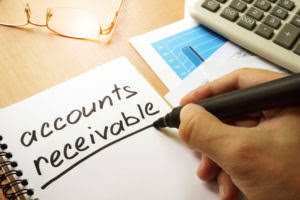Content

Companies that use the percentage of credit sales method base the adjusting entry solely on total credit sales and ignore any existing balance in the allowance for bad debts account. If estimates fail to match actual bad debts, the percentage rate used to estimate bad debts is adjusted on future estimates. When a business makes sales on credit, even customers with the best credit record and financial standing can go bankrupt and fail to pay the bills they owe.

To predict your company’s bad debts, create an allowance for doubtful accounts entry. To do this, increase your bad debts expense by debiting your Bad Debts Expense account. Then, decrease your ADA account by Bookkeeper? Accountant? CPA? What is the Difference? crediting your Allowance for Doubtful Accounts account. While a company is unlikely to avoid bad debt expense entirely, it can protect itself from bad debt in a number of ways such as allowance for bad debts.
What is bad debt ratio and how is it calculated?
The balance sheet method (also known as the percentage of accounts receivable method) estimates bad debt expenses based on the balance in accounts receivable. The method looks at the balance of accounts https://adprun.net/virtual-accounting-services-for-businesses/ receivable at the end of the period and assumes that a certain amount will not be collected. Accounts receivable is reported on the balance sheet; thus, it is called the balance sheet method.

Bad debt expense is one way of accounting because some customers will not pay their accounts. It’s a reasonable and accepted accounting principle, and it’s crucial to properly account for this kind of debt expense by defining, notating and calculating it accurately. In addition, maintaining accurate records of doubtful debt expenses ensures that companies comply with standard accounting principles and avoid penalties. Every business assumes the risk of non-payment when offering sales on credit. Bad debt expense (BDE) helps you record the impact uncollectible accounts have on your bottom line.
Alert: highest cash back card we’ve seen now has 0% intro APR until nearly 2025
Based on historical trends, you predict that 2% of your sales from the period will be bad debts ($60,000 X 0.02). Debit your Bad Debts Expense account $1,200 and credit your Allowance for Doubtful Accounts $1,200 for the estimated default payments. Your business should record bad debt expenses if you use accrual-based accounting, which is recommended by Generally Accepted Accounting Principles (GAAP) standards. The original journal entry for the transaction would involve a debit to accounts receivable, and a credit to sales revenue. Once the company becomes aware that the customer will be unable to pay any of the $10,000, the change needs to be reflected in the financial statements. The accounts receivable aging method groups receivable accounts based on age and assigns a percentage based on the likelihood to collect.
No responses yet